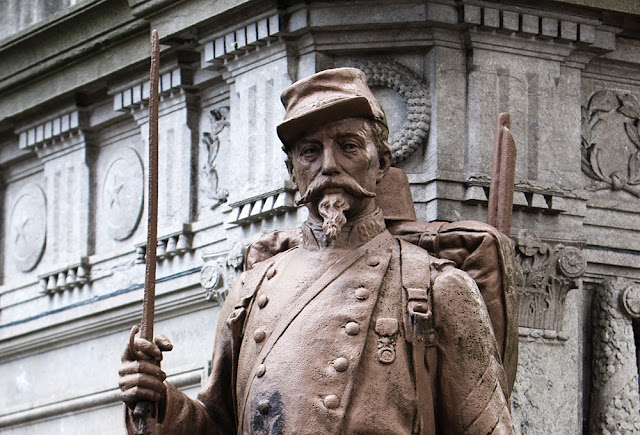Sunday was another beautiful day and since we had few pressing things "to do," we decided to spend at least some of it outside. Now living in the city can be a bit of a challenge when looking for outdoors stuff to do, particularly when you're not outdoors people (as in "us"), but this is Rhode Island and serious water is never very far away no matter where you are.
First up, we drove downtown to check out the Sunday morning flea market.
Located along the river just short of the hurricane barrier (and the entrance into the head of Narragansett Bay) this summertime market has fast become one of the more popular destination events in the city. Even though this was the last show of the season, there were plenty of vendors out and browsers to match. Hoping to tap in to the hunger of all those savvy shoppers was a virtual convoy of food trucks parked along South Water street catering to a variety of food tastes.
Once back to the car we drove a short 5 minutes across the Seekonk River to the northern terminus of the East Bay Bike path. Although lots of folks were out biking, jogging, rollerblading, walking, and fishing, we quickly found a place to park and spent an hour or so soaking up the sun and views along the eastern shore of Narragansett Bay.
Directly across the water from the bike path is, or rather was, Fields Point. In the 19th century for the residents of Providence, this was the place to go for swimming, boating and just generally being out of doors. Then it became something else altogether. . .
 |
After a gorgeous day we couldn't quite bring ourselves to let go of it. So we opted to go to one of the better places to eat outdoors, Waterman Grille.
Now when I say better I don't mean the food is up to the same level as New Rivers, Broadway Bistro, Chez Pascal or Nick's on Broadway (four of our favorite haunts) but the location is quite nice and that's what we were after.
We started with a glass of prosecco and asked for a a hit of Aperol. They didn't have Aperol (hmmmm) but we substituted Camapari. They put in two or three drops (that's right, drops) just enough to turn the drink pink rather than red. Obviously making cocktails isn't one of their strong suits we thought. But the drink tasted OK so what the heck -- we were sitting outside on a lovely evening enjoying life.
Susie had the the fish tacos followed by a Caesar Salad; I opted for Harissa meatballs as an app followed by a burger and (not-so-great) fries -- obviously meat night for me. Our server was pleasant and moderately attentive although he kept repeating his name as if we didn't "speaka da ahglish." Or maybe we looked to be a bit on the dumb side?
Anyway, as I said the food is OK but it's the ambience that's everything.
 |
| OK so the view from the restaurant is Seekonk and not Manhattan, that's true |
 |
| harissa meatballs on orzo salad == somewhat bland actually |
 |
| the salad was a bit boring but the anchovies lively |























































